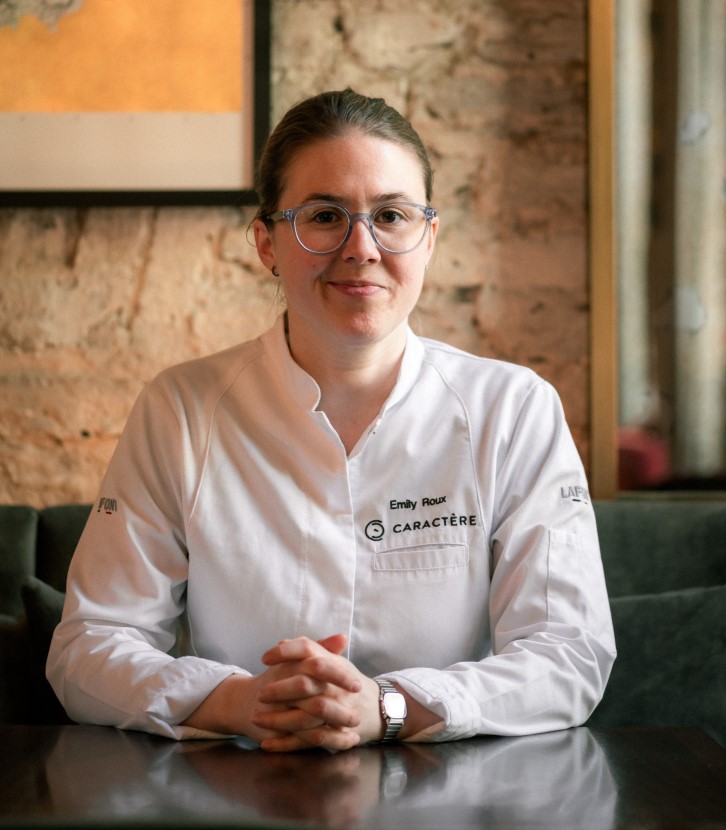When Ken Chong, the head chef of Michelin-recommended Palace Garden in Macau, graduated from culinary school at the age of 19, he began his career at the iconic Tim’s Kitchen. Under the tutelage of renowned chef Lai Yau Tim, Chong honed his skills and expertise. Descending from a long line of Cantonese cuisine masters, Lai was trained by the famed Guangdong chef Li Cai. Notably, Li Cai was the last disciple of Jiang Kong-yin, widely regarded as the “first man of the hundred Cantonese foods.”
Chong recounts a story of accompanying his shifu (master or mentor), Lai Yau Tim, to cook at a private dinner. When Lai greeted the guests after the meal, they all stood up and applauded. Peeking from the kitchen, Chong was astounded. “I had never expected the level of respect diners hold for a chef and the profound impact of having your guests appreciate your culinary creations.”

The dining room of Cantonese restaurant Palace Garden is the epitome of lavish maximalism. Its interiors are inspired by its namesake, featuring a 35-meter-long double-sided Suzhou silk embroidery screen adorned with chrysanthemums and songbirds. The chinoiserie is interspersed with French crystal chandeliers, creating an elegant atmosphere. Similarly, Chong’s dishes seamlessly blend tradition and innovation together, showcasing his constant pursuit of refinement of his cuisine.
Building a Firm Foundation
Chong went to culinary school at the tender age of 17. He joined Tim’s Kitchen as soon as he graduated, where he dedicated 13 years of his career, working his way up from the bottom.
It was during this time that he gained deep understanding of traditional “Taishi” cuisine, passed down from the venerated Jiang Kong-yin. He learned the importance of having a strong foundation in his culinary skills. For two years, he was responsible for tasks such as ingredient procurement, cost calculation, knife maintenance, ingredient preparation, and making soup stock. This experience not only gave him an understanding of operations of each kitchen department, but also reinforced his belief that the quality of ingredients was the bedrock of all cooking. “Chef Lai would never just let the dishes be served, even if they fell just slightly short of his high standards. The unwavering commitment to the quality of food is the most crucial virtue for a chef. ”
“It made me understand that the insistence of using the highest quality ingredients is the most important virtue that any chef can have.”
This constitutes the most important backbone in his culinary philosophy: “A good dish is comprised of 30% culinary skill and 70% ingredient quality. The ingredients are the key to the success of any dish and a test of a chef’s skill,” he explains. “Do you have the vision to identify a good ingredient and the ability to bring out its essence and beauty?”
Another ability he developed at a young age was adaptability. At that time, he often traveled around the world to cater for chef Lai’s banquets, from Southeast Asia, South Korea, to even Las Vegas. These jobs often required him to start cooking immediately after long flights, but the greater challenge came in adapting to the available resources, including cooking utensils, equipment, and ingredients. Luxurious delicacies such as Jinhua ham, sea cucumber, and fish maw were often hard to source overseas. He recalls a visit to Singapore when he discovered they did not even have a cooking stove. In a rush, he had to hastily purchase and transport two gas stoves from the market.
“Finishing that job gave me a great sense of accomplishment because it was a big challenge. I believe that those experiences had made me even more adaptable now," says Chong.

Innovating with Intention and Respect for Tradition
Chong continues to be flexible and adaptable in any situation, without losing the original intention. This philosophy extends to his approach in innovating and enhancing dishes, ensuring that the essence and core of tradition are well-preserved.
Take Palace Garden’s signature Crystal King Tiger Prawn dish as an example, a classic dish with a 50- year-long history. Its preparation requires skilfully removing the red “skin” on the prawns to show its snow-white flesh and delicate texture, before cooking it in a traditional Cantonese cooking technique called the oil bath. The key lies in controlling the oil temperature and carefully immersing the prawns to keep its crisp and tender texture. The dish is traditionally served with a sauce made from shrimp paste and oyster sauce, but Chong uses a 25-year-old Italian balsamic vinegar and homemade oyster sauce instead and replaces Jinhua ham with Spanish ham that’s been cured for 52 months. This dish encapsulates the chef’s philosophy of upholding tradition, while elevating it to the next level.
In another dish, Chong puts a new spin on traditional Cantonese paper-wrapped chicken, substituting chicken liver with French foie gras, while keeping the marinade and flavour profile the same with Chinese rose wine and five spice.

The chef says he is always learning. Beyond Palace Garden, Grand Lisboa Palace Resort Macau is home to several other international restaurants including Italian, Portuguese, and Japanese Kappo establishments. Chong dines in these restaurants and talks to their chefs about how they use certain ingredients or blend them into their cuisines. One dish that has come out of these conversations is a Yangzhou dish of Yunnan Morel Mushroom double-boiled with Bean Curd in Chrysanthemum shape (pictured in the left). The traditional dish features a block of tofu, cut carefully into gossamer strips that resemble an exquisite chrysanthemum flower floating in a clear chicken broth. In his version, Chong incorporates lessons learned from his neighbouring Japanese restaurant and uses kelp dashi instead.
In the recently concluded MICHELIN Star Table tour, Chong partnered with chef Fung Cheung of three- MICHELIN-starred Chao Shang Chao in Beijing for a special four-hands dinner. Chong’s takeaway from that collaboration? “The way they handled premium dried goods was different. They served a dish of Braised Sea Cucumber with Bitter Melon to cut through the richness. They also asked that the sea cucumber be soaked until soft and glutinous, almost like rice cake, instead of keeping its usual firmness and crunchiness. It required a totally different preparation and cooking process.”

Inherit a Piece of History and Show a Piece of Culture
However, the chef says that not every traditional dish needs to be changed. For example, the Taishi Five Snake Soup, a classic dish served in the famous Taishi-style banquet. It is a stew of shredded fungus, bamboo shoots and mushrooms with skilfully shredded snake meat. Its deliciousness lies not in the richness of the soup, but also in the size of each sliced ingredient. For example, bamboo shoots are crispier than black fungus, so bamboo shoots need to be sliced finer than black fungus, ensuring meticulous balance of each ingredients. At Palace Garden, Chong sticks to the traditional cooking techniques and flavours; his only modification is substituting snake for French partridges, with a similar texture and flavour as snake.
"I strongly believe in the importance of preserving and sharing Taishi cuisine. With the advancement in modern communication and supply chains, we can pass on Cantonese cuisine even more effectively,” Chong explains. He believes that preserving traditional cuisine is not just about transferring skill or recipes, it also represents the inheritance of a school of thought, a piece of history and a slice of culture, cementing its importance. "Many of our dishes are made from scratch laboriously by hand. Many other restaurants are no longer willing to do it, it only makes me want to continue doing so."
Upholding tradition and heritage while also embracing other cuisines, Chong hopes that Palace Garden will be the birthplace of dishes that are unique and instantly recognisable, expressing Cantonese cuisine in a new way for the next generation.





















